#Vaccine Nationalism
Explore tagged Tumblr posts
Text

Kamala will make the FUNNIEST president in all of American history 😂
#kamala harris#kamala harris for president#kamala harris 2024#kamala harris for the people#kamala harris for potus#anti donald trump#fuck donald trump#donald trump is a felon#donald trump is evil#imagine that! having some creepy ass old man like RFK FUCKING JR in charge of your health#much less WOMEN’S.#this old fucker got over EIGHTY people killed in Samoa with his anti vaccine bullshit#not to mention he SUPPORTS a national abortion ban so LOTS of women’s’ blood will be on his hands!!!
3K notes
·
View notes
Text
ARE VACCINES CAUSING CANCERS IN ALL OF US?
"Judy Mikovits, PhD is a biochemist and molecular biologist with more than 33 years of experience. Internationally known, a veritable “rock star” of the scientific world, she served as the director of the lab of Antiviral Drug Mechanisms at the National Cancer Institute before directing the Cancer Biology program at EpiGenX Pharmaceuticals. She later developed the first neuroimmune institute. Her early work focused on cancer and HIV, her latest on Chronic Fatigue Syndrome and autism. She has published more than 50 peer-reviewed articles."
In 2011, she made the discovery that destroyed her career. She found that at least 30% of our vaccines are contaminated with gammaretroviruses. Not only is this contamination associated with autism and chronic fatigue syndrome, it is also associated with Parkinson’s, Lou Gehrig’s disease, and Alzheimer’s.
The retroviruses contaminating vaccines originate from mice used for research. Dr. Mikovits asks, “How many new retroviruses have we created through all the mouse research, the vaccine research, gene therapy research? More importantly, how many new diseases have we created?”
“When they destroyed all of our work, and discredited everything I or Frank Ruscetti had ever published, and arranged for the publication of my mug shot in Science, the NIH very deliberately sent the message to researchers everywhere about what would happen to any honest scientist who dared ask those important questions.”
#world economic forum#wef#the great awakening#government corruption#bill gates#democrats#fjb#vaccines#nih#national institute of health#cdc#leukemia#alzheimers#lou gehrig's diseáse
169 notes
·
View notes
Text

You know they're scared of the RFK nomination.
#trump#donald trump#trump 2024#democrats#covid#vaccine#anti vaxxers#medicare#healthcare#healthylifestyle#big pharma#pharmabusiness#covid vaccine#donald j. trump#president trump#rfk jr#nyc#new york#fox news#infowars#california#wef#cdc#biden#anthony fauci#fauci#fauci lied#socialist politics#united nations#masks
101 notes
·
View notes
Text
"Five people have gone into remission thanks to advancements in medicine — and a sixth patient may also now be free of HIV.
One of the biggest breakthroughs in HIV/AIDS prevention in recent years is the widespread use of PrEP (pre-exposure prophylaxis).
This drug therapy, approved by the Federal Drug Administration in 2012, has been a key player in preventing HIV transmission through sex or injection drug use. Antiretroviral drugs, such as PrEP, also slow the replication of the virus and prevent it from progressing to AIDS.
Although PrEP has become a more accessible treatment for the virus, scientists have been hurriedly working towards cures for HIV for decades — and we’re finally seeing some results.
In February of this year, scientists in Germany confirmed a fifth-ever patient had been cured of HIV after receiving stem cell transplants that include genetic mutations that carry a resistance to HIV.
But it looks like a sixth patient may soon be able to join this very exclusive club.
The man, referred to as the “Geneva patient,” underwent a stem cell transplant after cancer treatment, though these cells did not include the HIV-resistant genetic mutation.
Still, he went off antiretroviral therapy for HIV in November 2021, and his viral load remains undetectable.
Instead, doctors are researching whether a drug called ruxolitinib may be partially responsible for his recovery.
Ruxolitinib decreases inflammation associated with HIV by blocking two proteins, JAK1 and JAK2. This helps kill off “reservoir cells” that lay dormant in the body and have a potential to cause rebounds in patients with HIV.
Experts say the AIDS crisis can end by 2030 across the globe — as long as leaders prioritize this goal.
A new report from UNAIDS shows a clear, optimistic path to ending the AIDS crisis. (This looks like a 90% reduction in cases by 2030.)
The organization’s report includes data and case studies that show that ending AIDS is a political and financial choice — and that governments that have prioritized a path towards progress are seeing extraordinary results.
By following the data, science, and evidence; tackling inequality; and ensuring sufficient and sustainable funding across communities, the global community could wipe out the AIDS pandemic by the end of the decade.
The report demonstrates that progress has been strongest in the countries and regions that have the most financial investments, like eastern and southern Africa, where new HIV infections have been reduced by 57% since 2010.
Investments in treatments, education, and access to care have also led to a 58% reduction in new HIV infections among children from 2010 to 2022 — the lowest number since the 1980’s.
Plus, the number of people on antiretroviral treatment around the globe has risen from 7.7 million in 2010 to 29.8 million in 2022.
The moral of the story? This goal can be achieved, if world leaders put their minds — and wallets — to it.
A region in Australia might be the first place in the world to reach the United Nations targets for ending HIV transmission.
Researchers believe that the central district of Sydney, Australia is close to becoming the first locality in the world to reach the UN’s target for ending transmission of HIV.
Specifically, new infections among gay men have fallen by 88% between 2010 and 2022. In fact, there were only 11 new HIV cases recorded in central Sydney last year, and almost all HIV-positive Australians are on antiretroviral drugs.
... "These numbers show us that virtual elimination of HIV transmissions is possible. Now, we need to look closely at what has worked in Sydney, and adapt it for other cities and regions across Australia.”
Namibia is ahead of schedule in UN targets to end HIV/AIDS.
Although the virus is still the leading cause of death in Namibia, the country is well on track to hit 95-95-95 UNAIDS targets before its 2030 deadline.
In Namibia, 92% of people know their HIV status, 99% of people living with HIV are on treatment, and 94% of people living with HIV who are on treatment are virally suppressed.
In addition to these exciting statistics, new infections have plummeted. The estimated rate of new HIV infections in Namibia is five times lower than it was in 2002, according to the Centers for Disease Control & Prevention.
These encouraging numbers are thanks to the investment and strategic response of PEPFAR, but also to the willingness of local governmental agencies and organizations to adhere to the UN’s Fast-Track approach.
Breakthroughs are being made in HIV vaccine therapies.
Long before we were all asking each other “Pfizer or Moderna?” about our COVID-19 vaccines, scientists have been researching the potential of mRNA vaccines in treating some of the world’s deadliest diseases — like HIV.
And with the success of our mainstream mRNA vaccines, an HIV inoculation remains a goal for researchers across the globe.
Last year, the National Institutes of Health launched a clinical trial of three mRNA vaccines for HIV, and similar studies are being conducted in Rwanda and South Africa, as well.
CAR T-cell clinical trials are underway to potentially cure HIV.
This spring, UC Davis Health researchers have dosed the second participant in their clinical trial, which poses the use of CAR T-cell therapy as a potential cure for HIV.
The study involves taking a participant’s own white blood cells (called T-cells), and modifying them so they can identify and target HIV cells, ultimately controlling the virus without medication.
The first participant in the study was dosed with anti-HIV T-cells last August, and the trial is the first of its kind to utilize this technology to potentially treat HIV.
Of course, the trials have a long way to go, and the lab is still preparing to dose a third participant for the study, but CAR T-cell treatments have been successful for lupus and forms of cancer in the past...
“So far, there have been no adverse events observed that were related to the treatment, and the two participants are doing fine.”
Guidance on how to reduce stigma and discrimination due to HIV/AIDS is reaching people around the globe.
While the stigma surrounding HIV and AIDS has significantly decreased — especially towards the LGBTQ+ community — with advancements in treatment and prevention, discrimination is certainly not gone.
While most people now understand HIV/AIDS better than they did decades ago, those most impacted by the virus (like gay men and low-income women and children) still face ongoing barriers to care and economic security.
It is vital to maintain awareness and education interventions.
After all, experts suggest that eliminating discrimination and stigma are key factors in reducing disease. And not eliminating stigma impedes HIV services, argues UNAIDS, “limiting access to and acceptance of prevention services, engagement in care, and adherence to antiretroviral therapy.”
Luckily, UNAIDS provides guidance on how to reduce stigma and discrimination in the community, workplace, education, health care, justice, and emergency settings.
The goal is to, of course, decrease stigma in order to decrease disease, but also to provide folks with the culturally significant support they need to live safe, integrated lives — with or without disease.
For instance, a 2022 study conducted in Northern Uganda showed that local cultural knowledge passed through Elders was a successful intervention in reducing HIV-related stigma among young people.
“Research in school settings has shown that the use of local cultural stories, songs, myths, riddles, and proverbs increases resilient coping responses among students and strengthens positive and socially accepted morals and values,” the study’s discussion reads.
So, while an uptick in acceptance gives us hope, it also gives us a directive: Keep telling the accurate, full, and human stories behind HIV/AIDS, and we’ll all be better for it. "
-via GoodGoodGood, August 3, 2023
#hiv#hiv/aids#aids crisis#public health#medical research#vaccines#australia#namibia#united nations#queer issues#trans issues#lgbtq issues#lgbtq community#infection prevention#good news#hope
273 notes
·
View notes
Text
I want to make a post to inform people about the current situation with the bird flu (/avian flu/H5N1) outbreaks.
I don't want to cause panic but do want to spread information.
This is especially important if you live in an area that has a news system you don't trust to give accurate, timely, or honest news about something like a possible new pandemic, use your own judgement.
If that applies it is going to be very important to make sure you stay informed and follow these H5N1 outbreaks yourself and know how to best protect yourself.
I am no expert, but I do know a good bit about disease and influenza in particular, and have been following the H5N1 outbreaks as they've been happening, so under the cut I'm going to do my best to inform everyone I can.
Please stay safe, stay informed, and spread information, not germs.
What's bird flu and why do I care? (What's bird flu and why do I care?)
Avian flu and bird flu mean the same thing, an influenza virus that (primarily) infects birds. H5N1 denotes a specific strain of avian influenza. H5N1 can spillover (when a pathogen spreads from it's normal host organism to a new host organism) from animals to humans.
How could I get H5N1? (How could I get H5N1?)
Human to human transmission has not been observed yet (12/1/24) during this current outbreak. You can get this from contact with wild birds, especially water fowl, domestic birds, cattle, pigs, horses, dogs, and bats. It is also possible to get from raw (unpasteurized) milk and undercooked meat from infected animals.
What's the big deal then? (What's the big deal then?)
The common flu is not very pathogenic. How pathogenic something is determines how sick something makes the host, something that is highly pathogenic can cause severe disease. H5N1 is considered a HPAI, Highly Pathogenic Avian Influenza.
H5N1 is also a Type A influenza virus, most known Type A influenza viruses can infect birds. There is one Type A human flu in circulation at the moment, however it isn't very prevalent.
"IAV poses a significant risk of zoonotic infection, host switch, and the generation of pandemic viruses. IAVs can infect humans and a variety of animals, such as pigs, horses, marine mammals, cats, dogs, and birds (S1)."
IAV - Influenza A Viruses | Zoonotic infection - when an infectious disease of a non-human host infects a human host | Host switch - when a cross-species transmission of a pathogen can lead to successful, stable, and continuous infections
Every species the flu infects, the more strains that pop up under a sub-type IAV, the possibility for recombination increases. "Recombination occurs when at least two viral genomes [or strains] co-infect the same host cell and exchange genetic segments (S2)."
The flu is pretty good at recombination, when given the chance. It is also really good at mutating, and fast. If there were to be a recombination event and a new strain evolved (this would be called an antigenic shift) that was highly pathogenic, highly infectious (good at spreading, which H5N1 is), that could then infect humans and cause human-to-human transmission we might have a pandemic on our hands. This has not shown signs of happening during this outbreak*, this is what to look out for.
This (a recombination event) is what caused the 1918 pandemic during WW1. This pandemic killed an estimated 50 to 100 million people in 1918, in a world with a population of around 2 billion. 7.1 million died of COVID 19, as of 11/9/24 (S3), from a population of around 8 billion.
We know more, we are prepared, it's not guaranteed to happen, and it's not guaranteed to be as bad. But the possibilities are endless and it's extremely important to be prepared and stay informed.
So what do I do? (So what do I do?)
Again, stay informed, and that might mean checking independent news sources, the CDC website, and more, to keep yourself updated, especially if you know your local news won't do it for you. You should also familiarize yourself with the symptoms of influenza, if you have it, stay home.
Keep yourself safe, we had a pandemic already, you know the drill. Cover your nose and mouth when sneezing/coughing, wash your hands, sanitize your hands, and get your flu shot. And, in addition, avoid contact with wild birds, poultry, pigs, and cattle if you can.
In the event that this gets worse, social distancing is very important, being outdoors, wearing a mask, and all the stuff above, you can shed the virus for around a week before you start feeling bad. Keep yourself safe and don't infect anyone else.
If that doesn't sound like it'll do much, I promise you it does. Those are all classified NPI's (non-pharmaceutical interventions) and even epidemiologists were shocked at their impact and importance during the COVID-19 pandemic. They did work, and they were incredibly effective—as long as they were carried out.
I don't want to cause panic or worry anyone, but that is how information ends of suppressed. I want to make everyone aware of what we might face so that we can fight it and be strong and stay safe.
If anyone has any questions, wants any clarification, any corrections, or wants to know some good places to learn more about this stuff please don't hesitate to contact me (@'s, dm's, or asks), I will answer as best I can.
Here's the CDC's page covering the H5 bird flu current situation.
S1 - https://pmc.ncbi.nlm.nih.gov/articles/PMC5578040/
S2 - https://pmc.ncbi.nlm.nih.gov/articles/PMC7106159/
S3 - https://data.who.int/dashboards/covid19/deaths?n=c
*with the exception of this coverage (as a possibility): https://www.theguardian.com/world/2024/nov/19/bird-flu-cases-mutation-canada
#signal boost#influenza#influenza virus#flu vaccine#flu season#H5N1#bird flu#avian flu#health and safety#cdc#WHO#NIH#centers for disease control and prevention#world health organization#national institutes of health#pandemic#masks#epidemic#h5n1 virus#public health#covid 19#covid#birds#pigs#poultry#raw milk#california#autoimmune#spoonie#tbwf
41 notes
·
View notes
Text
Hey Americans, it’s fall 2023 and the adult Covid vaccines are STILL FREE at certain pharmacies. Even if you have no health insurance. Even if you have health insurance but the insurance company likes to whine about CVS being “out of network” for vaccinations.
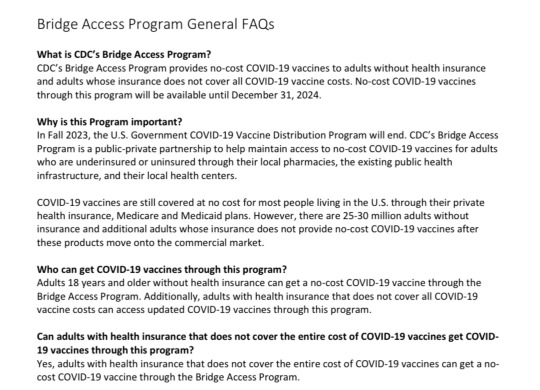

Find out more FAQ stuff from the CDC here:
And find your local locations with free vaccines below. Once you’ve put in your zip code and hit “go”, on the next page, make sure to click the checkbox that says “BRIDGE Access Participant” so you know these locations have the free shots.
#text post#Covid#covid19#covid 19#covid vaccine#covid pandemic#pandemic#vaccine#signal boost#boost#please boost#vaccination#covid-19#I am just putting as many tags that I can think of on this post to help it get to people#because I was unaware that the government was continuing to fund free vaccines#because the national health emergency ended in May#so finding out I could still get it for free even if my insurance wanted to be annoying was a relief#and I want to make sure others know it too
257 notes
·
View notes
Text
i'm gonna give away where i work with this status lol but i feel like way more people need to be aware of what the national immunization survey is.
the national immunization survey is a survey conducted on behalf of the CDC via phone. it's the CDC's primary source of immunization data in the country, and it's been going on since 1994. random phone numbers are called to make sure that people from all backgrounds are being fairly represented, so it's a totally random deal if you're selected to participate. i know there's a ton of weird scam calls out there, but if you get a call from someone about an immunization survey and the caller ID says CDC NATL IMMUN, it's 100% legitimate.
you can read more information about it on the CDC's website.
even if you have never been vaccinated, are against vaccinations, etc, your response is important so the survey results aren't biased and so your voice is also heard. the survey is not trying to convince anyone to get vaccinated; it's just collecting numbers. it's also about more than just covid vaccinations. (like i said, the survey has been conducted since 1994, so it far predates covid.)
even if you don't want to participate, please don't be mean to the interviewer who called you. we're just trying to make a living. you would not believe the things we get called, and it's so beyond unacceptable. literally all you have to do is ask the interviewer to remove you from the list. you have to say those exact words and then we'll leave you alone. please for the love of god stop cussing us out. just say take me off the list. it's that easy.
tl;dr if you get a call from the CDC about a survey, it's NOT a spam call. be nice. we're tired.
#the CDC has done an absolute dogshit job of making the public aware of this survey and their survey interviewers take the brunt for it#i'm sick of it and taking matters into my own hands by yapping about it online#the national immunization survey is important and good. tell all your friends.#cdc#vaccinations#covid#etc#pls reblog thanks
20 notes
·
View notes
Text
COVID-19 makes a worrying comeback, WHO warns amid summertime surge
COVID-19 infections are surging globally, including at the Paris Olympics, and are unlikely to decline anytime soon, the World Health Organization (WHO) says. The UN health agency is also warning that more severe variants of the coronavirus may soon be on the horizon.
“COVID-19 is still very much with us,” and circulating in all countries, Dr. Maria Van Kerkhove of WHO told journalists in Geneva.
“Data from our sentinel-based surveillance system across 84 countries reports that the percent of positive tests for SARS-CoV-2 has been rising over several weeks,” she said. “Overall, test positivity is above 10 per cent, but this fluctuates per region. In Europe, percent positivity is above 20 per cent,” Dr. Van Kerkhove added.
New waves of infection have been registered in the Americas, Europe and Western Pacific. Wastewater surveillance suggests that the circulation of SARS-CoV-2 is two to 20 times higher than what is currently being reported. Such high infection circulation rates in the northern hemisphere’s summer months are atypical for respiratory viruses, which tend to spread mostly in cold temperatures.
“In recent months, regardless of the season, many countries have experienced surges of COVID-19, including at the Olympics where at least 40 athletes have tested positive,” Dr. Van Kerkhove said.
As the virus continues to evolve and spread, there is a growing risk of a more severe strain of the virus that could potentially evade detection systems and be unresponsive to medical intervention. While COVID-19 hospital admissions, including for Intensive Care Units (ICUs), are still much lower than they were during the peak of the pandemic, WHO is urging governments to strengthen their vaccination campaigns, making sure that the highest risk groups get vaccinated once every 12 months.
“As individuals it is important to take measures to reduce risk of infection and severe disease, including ensuring that you have had a COVID-19 vaccination dose in the last 12 months, especially, if you are in an at-risk group,” stressed Dr. Van Kerkhove.
Vaccines availability has declined substantially over the last 12-18 months, WHO admits, because the number of producers of COVID-19 vaccines has recently decreased.“It is very difficult for them to maintain the pace,” Dr. Van Kerkhove explained. “And certainly, they don't need to maintain the pace that they had in 2021 and 2022. But let's be very clear, there is a market for COVID-19 vaccines that are out there.”
Nasal vaccines are still under development but could potentially address transmission, thereby reducing the risk of further variants, infection and severe disease.
“I am concerned, “ Dr. Van Kerkhove said. “With such low coverage and with such large circulation, if we were to have a variant that would be more severe, then the susceptibility of the at-risk populations to develop severe disease is huge,” Dr. Van Kerkhove warned.
21 notes
·
View notes
Text
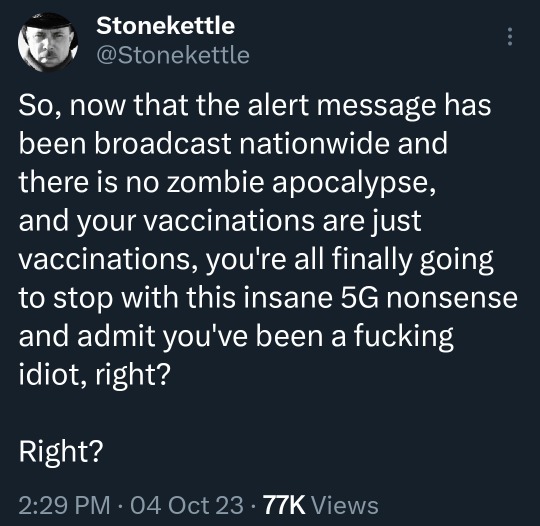
#fema emergency test#emergency alert#FEMA national alert#5G#zombie apocalypse#qanon#04October2023#october 2023#FEMA#vaccines
96 notes
·
View notes
Text
Tally still isn't quite back to 100% yet, but she's recovered a lot in general. Every time she does one of her normal habits that she'd stopped doing while she was sick, my heart just squeezes with gratefulness. Stuff like her yowling like I died after I go to bed, her climbing onto my lap while I'm sitting on the toilet and/or watching me from on top of her litter box, her jumping onto furniture, her getting up in my face and sniffing my breath as I slowly blow air at her, her trying to eat the plants, her PLAYING.... and of course, her eating.
I also discovered the coat rack toppled over onto the couch after getting out of bed today - surely her doing. Didn't break anything so im just glad she's back to being at least some semblance of a chaos demon, even if she's not totally recovered yet.
It's the little things, sometimes. All her little habits, some harmless and some annoying, that make up who she is and her presence in my life. When all of these stop, so she's just a lump on the couch, barely eating and barely getting up... it was unsettling. And worrisome.
But I've got my baby back. She's still not super high energy, but she's got enough to feel like herself again. And I'm so, so grateful.
#speculation nation#i had a vet appointment scheduled for yesterday for blood work if she still wasnt better by then#and on monday when they called to confirm the appointment she was still really lethargic. only starting to act better.#so i didnt wanna cancel it yet. but on tuesday and wednesday she was acting a Lot better. actually mostly finishing her dry food!!#and returning to a lot of her old habits. i was really glad.#of course since it was new years eve and new years day i couldnt call the vet to cancel the appointment on the 2nd. bc the office was closed#but thankfully when i called earlier in the day yesterday they were completely fine canceling the appointment day-of#a lot of places dont let u do that so it was a relief bfmsbfm#so im watching her to make sure she doesnt get worse again. but i think she'll be fine.#i feel like it likely Was the same thing that june had. but a different manifestation. and more worrying.#bc june was just sneezing for like a week ish. i felt rly bad for her but she was still eating fine.#and she was up and playing and such. but when tally got sick... it was like she was a whole different cat.#i never want to see tally so stiff and lethargic and refusing to eat food like that again.#i know theres a good chance i will. eventually. but i hope it's not for a good long while. at least a decade.#my baby's normally the picture of health so it just feels so wrong...#and ultimately. i think the trip to the vet to get their vaccines is what caused this. the stress lowering their immune systems#and potentially smth they picked up while they were there. idk.#it was still important to get them their updated vaccines. but God i could've done without the reactions and sicknessss hfkshfnd
7 notes
·
View notes
Text

SOURCE
Elliot Pfebve, 55, is the first patient in England treated with a personalized vaccine for bowel cancer at Birmingham’s Queen Elizabeth Hospital.
Thousands more patients will receive the experimental vaccine, not as a cure but to target remaining cancer cells after treatment.
The NHS will match patients to clinical trials for their specific tumors via the Cancer Vaccine Launch Pad, using mRNA technology to train immune systems to combat cancer cells.
#sulemio news#sulemio#suletta mercury#miorine rembran#g-witch#g witch#uk news#uk nhs#uk national health service#cancer vaccine#cancer#english cancer patients#nhs cancer patients
26 notes
·
View notes
Text
That guy who rated ant bites and wasp stings should come back and do each year's seasonal vaccinations.
Autumn, 2024, Moderna spikevax and whatever flu variant they had lying around [notice how we don't label flu shots with corporate logos? the messaging on this shit was so inept]
12 hours out. Tender everywhere. Light fever. Tried to stop shivering, shivered harder, spilled my drink. Can't sleep on either arm. I love you science now go fuck yourself.
#I love vaccinations vaccinations are my friend#the friend is currently parking their car on my upper arm#I'm doing my bit for the nation therefore I get to whine about it
9 notes
·
View notes
Text
Good News - May 1-7
Like these weekly compilations? Support me on Ko-fi! Also, if you tip me on Ko-fi, at the end of the month I'll send you a link to all of the articles I found but didn't use each week - almost double the content!
1. New study says conservation works, providing hope for biodiversity efforts
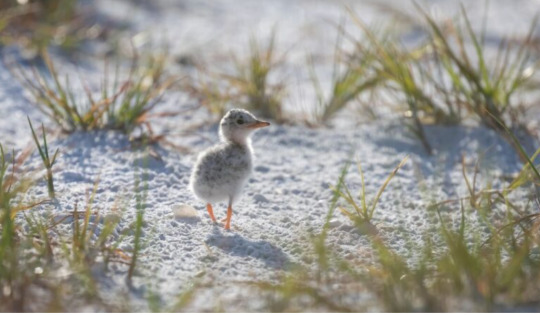
“A new study published in Science reveals that conservation works, with conservation actions improving or slowing the decline of biodiversity in two-thirds of the cases analyzed.”
2. Monk Seal Pup Debuts in Waikīkī on Lei Day
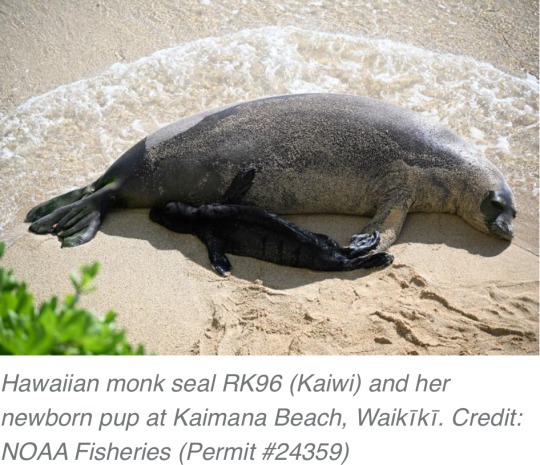
“Endangered Hawaiian monk seal RK96 (Kaiwi) gave birth to her sixth pup on popular Kaimana Beach in Waikīkī, Oʻahu! […] Hawaiian monk seals are one of the most endangered seal species in the world, so each pup represents hope for the species’ recovery.”
3. West Coast Indigenous-led marine conservation area gets global spotlight

“A coastal First Nation is celebrating global recognition of its marine protected area after recently snagging a “blue park” designation that highlights exemplary ocean conservation efforts around the world. […] Kitasu Bay supports one of the last abundant herring spawns along the central coast, vital to the nation’s communal herring roe on kelp (ROK) fishery - which harvests the protein-rich eggs but leaves the fish alive to flourish and spawn again.”
4. The number of fish on US overfishing list reaches an all-time low. Mackerel and snapper recover
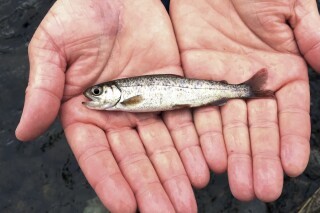
“The report states that 94% of fish stocks are not subject to overfishing, which is slightly better than a year ago. The U.S. was able to remove several important fish stocks from the overfishing list, NOAA said in a statement. […] The removal of species from the overfishing list shows the U.S. is making progress, said Rick Spinrad, NOAA’s administrator.”
5. Researchers Collaborate with the Shipping Industry to Cut Costs, Fuel Consumption and Greenhouse Gas Emissions in Shipping
“Through coordinated ship scheduling and an optimisation of ship operations and port services, the objective is to achieve a substantial increase in energy efficiency and a 10-20% reduction in fuel consumption, consequently resulting in lowered greenhouse gas emissions [and] leading to substantial economic benefits for shipping and environmental advantages for society[….]”
6. The city flower farm that is changing lives
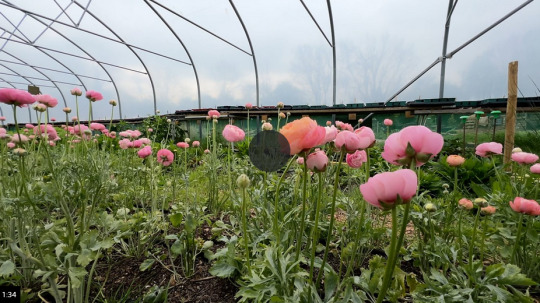
“Heart of BS13 Flowers in Hartcliffe is part of the wider Heart of BS13 charity which tackles food insecurity in south Bristol. Profits from the flower sales to run workshops, offer volunteer and trainee placements, and create education opportunities for people from Hartcliffe.”
7. Four falcon chicks hatch in Glasgow university tower

“Members of the [Glasgow Peregrine] project hope to […] fit [the chicks] with electronic tags that will enable monitoring of their movements. Mr Simpson added: "With the identification tags we can see where they have gone, how high they fly and other information that would be really useful." In recent years the group have held peregrine watches at the university, allowing people to see the birds in their nest.”
8. 'Banana pingers' are saving whales and dolphins around the world

“[T]he Kibel brothers, Pete (a fisheries biologist) and Ben (an engineer) […] have been utilising light to protect turtles, sound to protect porpoises and electro pulses to protect sharks. [… Trials] showed reduced average catch rates of blue shark by 91%, and catch rates of pelagic stingray by 71% […as well as] a fall in the number of sea turtles being trapped by 42%.”
9. New vaccine effective against coronaviruses that haven't even emerged yet
“Researchers have developed a new vaccine technology that has been shown in mice to provide protection against a broad range of coronaviruses with potential for future disease outbreaks -- including ones we don't even know about. […] The new vaccine works by training the body's immune system to recognise specific regions of eight different coronaviruses, including SARS-CoV-1, SARS-CoV-2, and several that are currently circulating in bats and have potential to jump to humans and cause a pandemic.”
10. Grassland birds, Forest birds and Other Migratory Birds to Benefit from More Than $22 Million in Funding Throughout the Americas
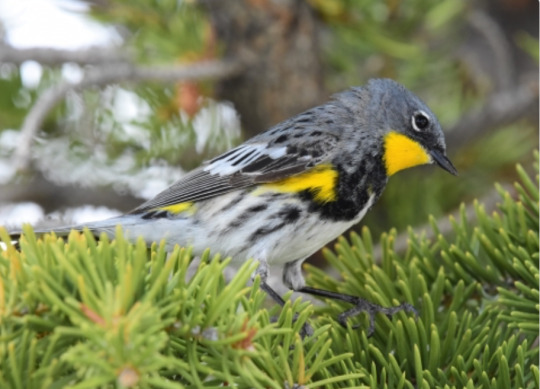
“This year, more than $4.87 million in federal funds will be matched by more than $17 million in partner contributions going to 30 collaborative conservation projects in 19 countries across the Americas. “These investments will [… protect] millions of acres of diverse habitats needed by grassland birds, forest birds and shorebirds for wintering, breeding and migration,” said Service Director Martha Williams.”
April 22-28 news here | (all credit for images and written material can be found at the source linked; I don’t claim credit for anything but curating.)
#good news#hopepunk#sorry its late i got distracted lol#biodiversity#conservation#seal#monk seal#hawaiʻi#oahu#first nations#fish#noaa#shipping#climate change#greenhouse gasses#ships#flowers#falcon#glasgow#university#peregrine falcon#birds#whale#dolphin#shark#turtles#vaccine#coronavirus#health#animals
21 notes
·
View notes
Text

Here we go ... 2.0! Just in time for Trump's return to office.
#trump#donald trump#president trump#democrats#donald j. trump#fox news#lockdown#flu vaccine#virus#vaccine#anthony fauci#fauci#cdc#anti vaxxers#bird flu#economy#elites#mind control#usa#america#cnn#msnbc#outkick#newsmax#congress#senate#deep state#swamp#united nations#london
32 notes
·
View notes
Text
#world aids day#day#hiv day#world aids day 2022#aids day#world aids day (holiday)#hiv aids day#world hiv day#aids vaccine day#top news today#national aids day#world hiv aids day#world aids day 2010#world aids day 2020#world aids vaccine day#nih world aids day 2019#international aids day#world aids awareness day#world aids day special with david#glenda gray#worldaidsday#\world aids day\#worldaidsday2021#update#professor glenda gray#world aids
7 notes
·
View notes
Text
The European Union and New Zealand appear to be paving the way for ‘Terrorist Chancellor’ Tedros and his new Pandemic Treaty!
#politics#us politics#democrats are corrupt#democrats will destroy america#world politics#wake up democrats!!#free world#covid lies#covid scam#vaccines#scare tactics#big pharma#world economic forum#world health organization#united nations#fascisim#the communist manifesto#societal collapse
15 notes
·
View notes